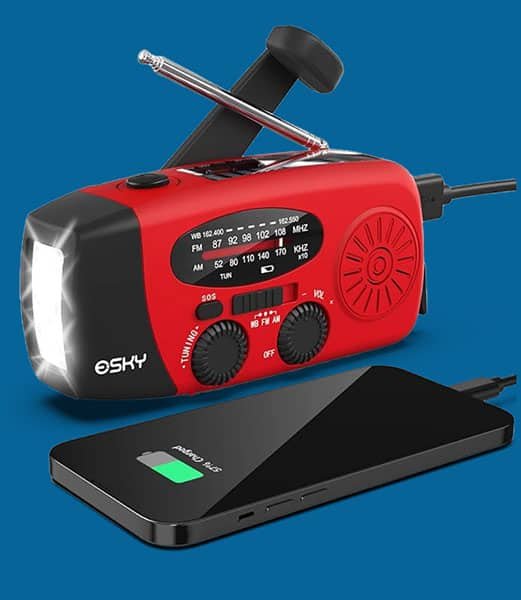Instant South Carolina Flood Insurance at Great Rates.
Guaranteed.
Save big with our reliable SouthCarolina flood insurance plans—fast quotes, faster coverage.

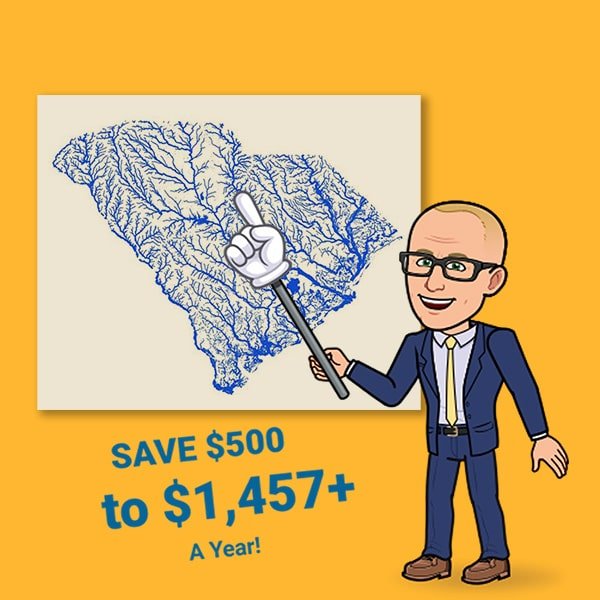







$2.3M+
Annual Premium Savings
4.9★
Average Ratings
445+
Reviews
5,497+
Happy Clients
We Get It,
Buying Flood Insurance in South Carolina Is Confusing…
You might be asking:
• What coverage do I need?
• How much is flood insurance in South Carolina going to cost me?
• How much can I save?
It’s okay, your search for cost-effective SC flood insurance that doesn’t compromise on coverage ends here.

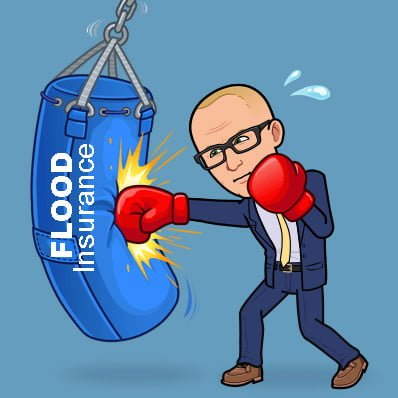
Meet The Flood Nerd™
Your South Carolina Flood Expert, Friend, and Guardian
In 2015, Robert Murphy, inspired to help homeowners and businessowners alike, entered the insurance brokerage market with one goal in mind: To help uncertain SC homeowners find affordable, high quality flood insurance that doesn’t compromise on coverage.
We Find You Great Coverage
While Saving You Up To $1,457+ A Year!
What you seek is:
Enhanced security for your South Carolina Property.
Significant savings.
Absolute freedom.
Unwavering certainty.
Memorable moments.
Quality family time.
Peaceful travels.

It's As Easy As 1, 2, 3!
1
Fill Out Our Online Form
Complete our easy quote form so we can understand your needs & personalize your rates.
2
Get An Instant Quote
Our team scours insurance companies nationwide to instantly present the best coverage & rate options for your needs.
3
Get Coverage
If you’re happy with the coverage options, you can sign up easily directly from our online portal.
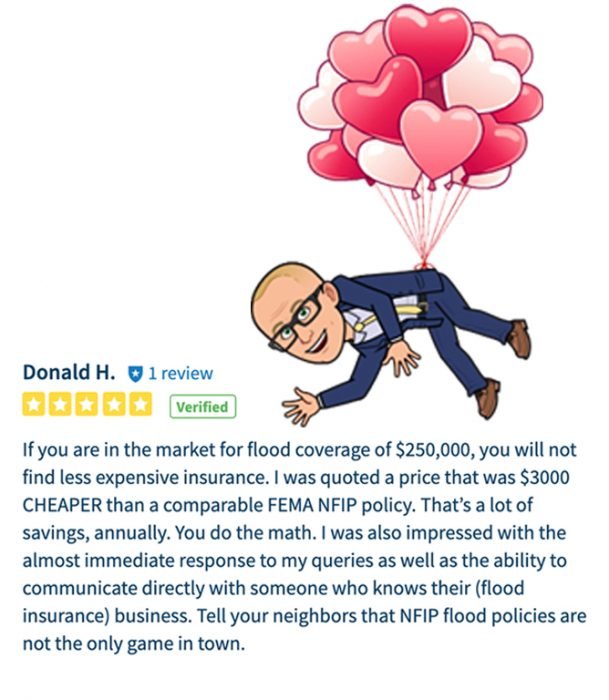
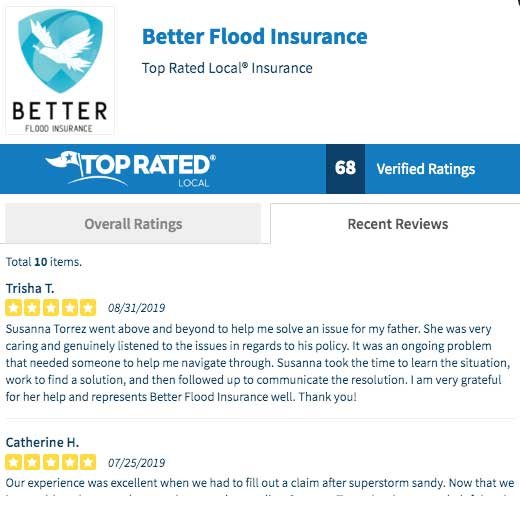
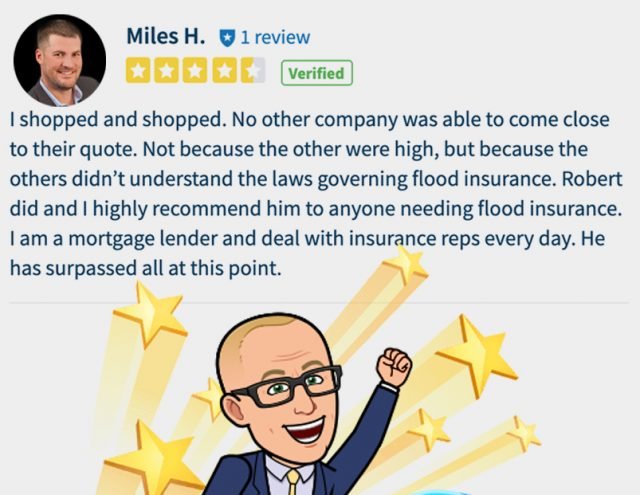
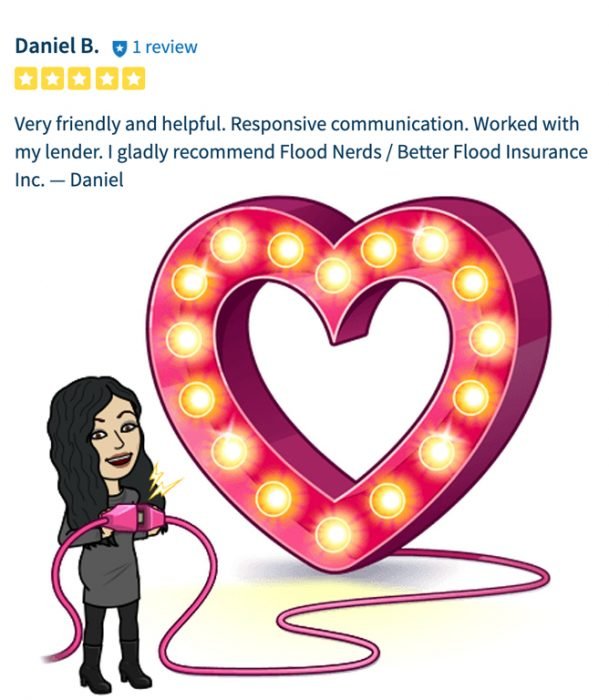
Save on flood insurance South Carolina.
Flood insurance in South Carolina
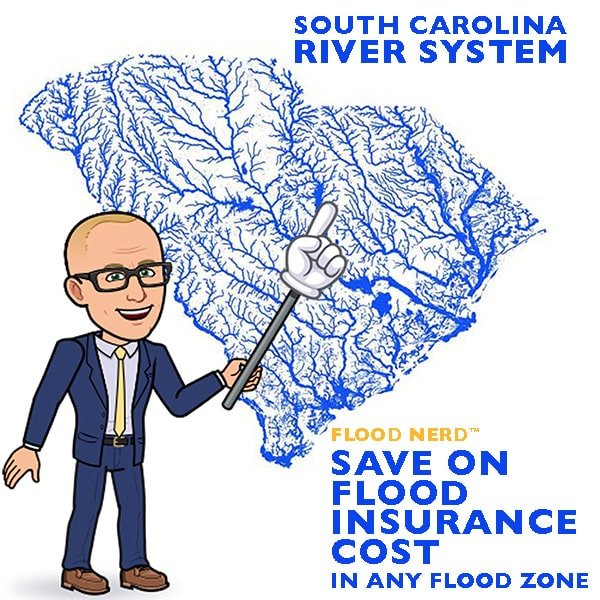
Does my South Carolina homeowner insurance cover flooding?
A typical South Carolina homeowners’ policy is written through Farmers, State Farm, Allstate, and Progressive, for instance, excludes flooding as something that will be covered under their homeowner’s policy.
In most cases, the only way to get flood coverage is by purchasing a stand-alone flood insurance policy. However, you should ask your homeowners agent if you can add an endorsement to your homeowner’s policy to cover flooding. Yet, don’t be too surprised if the answer is NO.
Do I need flood insurance in South Carolina?
It is important to have flood insurance coverage in South Carolina because our beloved Cowboy State has seen a fair share of flooding, and there is likely more coming.

We believe that most homeowners think about Flood insurance in South Carolina at some point, maybe before buying a home or during the closing process. However, many of us only think about it when a big storm looms, or we have heard on the news that there is flooding forecasted or happening too close to our home.
If your home or business is in a flood zone, that is considered a low flood-risk area. Sadly, many homeowners decide to forgo purchasing coverage because they believe they are safe from flooding. Some real estate and insurance agents may even say you don’t need it.
I ask you to consider the facts: 20 percent of all flooding events across our nation come in areas that are considered low risk. After our last few major storms (Hurricane Harvey), we saw flooding in these low-risk areas. Eighty percent of these individuals had water in their homes or buildings and didn’t have flood insurance coverage.
In Harris county, nearly 135,000 homes were damaged. Three-fourths of these properties were considered low to moderate risk.
We often hear that people believe that the government will help, which is true. However, a few things must align for you to get government assistance.
1 – The president of the United States must declare the flooding event a state of emergency. If this doesn’t happen, then there won’t be assistance.
2 – The average amount of assistance that homeowners get after a flood when they do not have flood coverage, is $5,000. The average cost of damage to one’s property after a flood is $38,000+. That $5K you get from the government? It comes as a loan, and you will need to pay it back. Are you willing to gamble your financial future by forgoing flood insurance coverage?
One more note on these low-risk flood zone maps. Many of these maps are over 40 years old. If the area has been developed, there is likely more concrete, creating a barrier for land that previously might have absorbed the massive downpour.
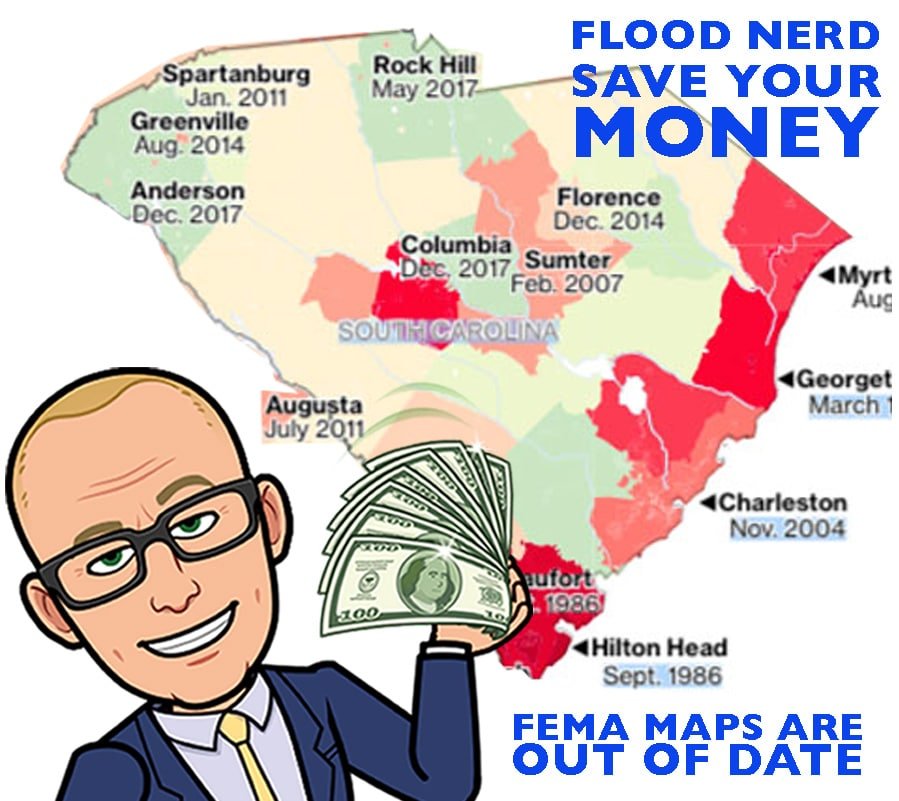
Flood map Charleston SC | South Carolina flooding map
Because of all these factors, it is difficult for property owners to know their true risk of flooding. FEMA admits that their flood maps only give an idea of part of the risk. Our recent storms are facts that it can rain anywhere within South Carolina, and you should consider getting flood coverage so you are not uninsured when you need it most.
FEMA flood zone maps often take years to go into effect after the terrain was studied; this gives the impression that the area is “more up to date” than it is.
The average cost for South Carolina flood insurance in these Low-risk areas is $595 per year.
FEMA’s National Flood Insurance Program (NFIP) and all federally backed lenders rely on these South Carolina flood insurance map to assess risk, set premiums and determine who is required to purchase flood insurance. Bad information about an area’s flood risk can leave property owners under or uninsured.
How much is flood insurance in South Carolina?
There are many options available in South Carolina regarding flood insurance, but they fall into two main categories. Through the Government program called the NFIP, FEMA, or the private flood insurance market.
The National Flood Insurance Program (NFIP), also known as FEMA, is the government option for flood insurance. The NFIP has enjoyed a 50-state monopoly on the flood insurance market.
To give you a better sense of typical flood insurance costs across South Carolina, here are some sample premiums for common property types in major cities:
For a single-family home in Charleston located in an AE flood zone (high risk) with $250,000 building coverage and a $5,000 deductible:
- NFIP Premium: Around $3,000 per year
- Private Flood Premium (via Lloyd’s): Around $800-$1,500 per year
For a condominium unit in Myrtle Beach located in an X flood zone (moderate risk) with $150,000 coverage:
- NFIP Preferred Risk Policy Premium: Around $500 per year
- Private Flood Premium: $300-$600 per year
For a commercial office building in Columbia located in an AE zone with $500,000 building coverage:
- NFIP Premium: $5,000-$8,000 per year
- Private Commercial Flood Premium: $3,500-$6,500 per year
As you can see, premiums can vary significantly based on flood risk, coverage amount, property type, and whether you opt for the NFIP or a private market insurer. Working with an experienced flood broker can help ensure you get the right coverage at the best possible price.
How to Lower Your Flood Insurance Premiums in South Carolina
While elevating a home above the base flood elevation level can potentially reduce flood insurance premiums, this is often an extremely expensive and impractical solution for most homeowners unless the property is experiencing frequent flooding. A more realistic approach is to maximize your flood insurance coverage to the highest limits you can reasonably afford, especially by exploring private flood insurance options. Private insurers like Lloyd’s of London can provide higher coverage limits than the NFIP’s $250,000 building/$100,000 contents maximums. If working with an experienced broker like The Flood Nerds, they can shop the private market to find you the strongest coverage at the most affordable rates.
It’s also important to understand that being mapped into a higher-risk AE flood zone could actually provide some advantages. These areas typically require more stringent flood mitigation efforts by local governments, which have proven highly effective at reducing risk over time. Conversely, properties in lower-risk X zones can be quite misleading, as many owners forgo purchasing any coverage due to a false sense of safety. Unfortunately, a significant percentage of flood losses occur in these supposed “lower-risk” areas annually. The better strategy is ensuring you have sufficient flood insurance in place, whether through the NFIP’s Preferred Risk Policy in X zones or a private policy, rather than trying to self-mitigate or avoid coverage entirely based on inaccurate risk assessments.
Not “private flood insurance” but NFIP Resellers
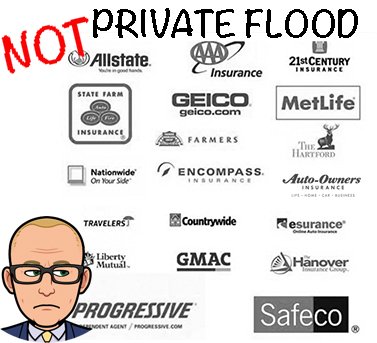
If you have Nationwide Flood Insurance, State Farm Flood Insurance, Progressive Flood Insurance, or any the of the logos above, then you are buying the NFIP flood policy that is just being resold through a government program. These companies are private companies, but their flood insurance is not. Here is a list of the 70 companies that resell the NFIP policy.
How much is flood insurance in South Carolina?

South Carolina private flood insurance market
There are alternatives to the NFIP or government insurance. It is called Private flood insurance, most notably Lloyd’s of London Flood insurance. However, there are other options available in South Carolina. We shop all the options for your property in your region to ensure you are getting the best premium. Please click here if you are ready to have us do the work for you.
Our shopping includes the NFIP because sometimes we find that you can get a much better premium with government subsidies.
SC flood insurance quote
Lloyd’s of London Flood Insurance South Carolina Market
South Carolina is fortunate to have many Lloyd’s of London flood insurance options. Although many Lloyd’s flood insurance companies will have you assume that there is only one option, nothing could be further from the truth.
Lloyd’s of London has a rich history attributed to having invented the first modern insurance model. Unlike most of its competition, Lloyd’s of London is not a company but a corporate body. This structure works well since it has been around for over 330 years. Lloyd’s operates under multiple financial backers pooling their capital to spread the risk.
I have two blog posts that deep dive into Lloyds of London and what they mean to South Carolina’s flood insurance market. If you are interested, the links are below.
Lloyd’s of London Flood Insurance
NFIP vs Private flood insurance
Lloyd’s also insures the world with flood insurance, meaning they cover flooding events in India, Australia, and much of Europe. The “game” of insurance is to spread your risk since Lloyds is worldwide.

My joke here is that Lloyd’s is banking on God’s promise that he won’t flood the entire world again, …..so they won’t have to pay out the whole world’s flood claim.
How much does flood insurance cost in South Carolina?
Many factors go into getting the cost of flood insurance for South Carolina. If your home is in what is considered a low-to-moderate risk, you can get a heavily subsidized policy through the government.
South Carolina flood insurance low-to a Moderate Risk rate and cost.
This is Flood Zone X, which is not lender required flood zone.
This is usually identified as an X-flood zone. Then we would suggest the government Preferred Risk Policy (PRP) which is a subsidized policy and has set flood insurance coverage limits (see the grid below):

The average cost for flood insurance in South Carolina with the maximum set limits in these Low-risk flood zone areas is $405 – $700 per year.
Your property is in a higher-risk flood zone, usually identified with a Flood Zone AE. Your lender will require you to have flood insurance. The cost of flood insurance in South Carolina depends on many factors unique to the structure. We will try to give you an idea of the most common homes we see in South Carolina with a slab-on-grade foundation.
We will look at the South Carolina cost of flood insurance for the NFIP maximum of $250,000 for the (building only) with NO CONTENTS and our recommended deductible of $5,000.
We will be rating this example on the NFIP and on a few of our private flood insurance policies, specifically Lloyds flood insurance options in South Carolina.
When deciding between the NFIP and private flood insurance options in South Carolina, there are some key factors to consider. The NFIP policies are backed by FEMA and have maximum coverage limits of $250,000 for the building and $100,000 for contents. However, there is typically a 30-day waiting period for new policies to go into effect unless you are making a new mortgage loan. Private insurers like Lloyd’s of London can often provide higher coverage limits which may be necessary for higher-valued coastal properties.
Many private policies also have no waiting periods for coverage to commence. On the downside, private insurers can be more selective about which risks they will insure, sometimes declining properties with previous flood losses or those in extremely high-risk zones. Premiums for private flood can potentially be lower than the NFIP, but this may vary year-to-year based on the insurer’s exposure. For properties in South Carolina’s lower-risk X zones, the NFIP’s Preferred Risk Policies are often the most affordable option. Ultimately, exploring both NFIP and private quotes is advisable to secure the right protection at the best price.
Cost of Flood Insurance in SOUTH CAROLINA in high-risk flood zone AE
Our example is Beaufort, but the premiums will be the same if in Hilton Head Island, Charleston, Mount Pleasant, Horry, North Myrtle Beach, and many other South Carolina flood ones.
In our example, the Base Flood Elevation (BFE is 10) and is a home that is built before 1973
NFIP option in South Carolina Flood Zone AE
NFIP – Coverage of $250,000 building coverage (no Contents coverage) and $5,000 deductible
NFIP Annual premium in High-Risk flood zone is $3,351.77
This option is what we see if the property has had a flood loss before and either doesn’t have an Elevation Certificate applied or the Elevation certificate shows that the lowest floor is 4 feet under the BFE for the area. You can use 10% of your coverage to cover other structures on your property.
NFIP option in South Carolina Flood Zone AE
NFIP – Coverage of $250,000 building coverage (no Contents coverage) and $5,000 deductible
NFIP Annual premium in High-Risk flood zone is $3,351.77
This option is what we see if the property has had a flood loss before and either doesn’t have an Elevation Certificate applied or the Elevation certificate shows that the lowest floor is 4 feet under the BFE for the area. You can use 10% of your coverage to cover other structures on your property.
South Carolina Private flood insurance – Lloyd’s of London Flood Insurance (option 1)
Coverage of $250,000 building coverage (no Contents coverage) and $5,000 deductible
Lloyd’s of London (option 1) Annual premium in High-Risk flood zone is $779.10
This option is great, and we are very happy when we can get this option. They can be a bit choosey about what risk they will accept and will not take anything that has had a flood loss. They do offer coverage for basements, about $2,000 for loss of use, $2,000 for other structures, but they can’t increase this coverage. They do not require an Elevation Certificate to rate.
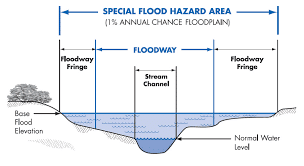
South Carolina Private flood insurance – Lloyd’s of London Flood Insurance (option 2)
Coverage of $250,000 building coverage (no Contents coverage) and $5,000 deductible
Lloyd’s of London (option 2) Annual premium in High-Risk flood zone is $728.22
This option is great, and we are very happy when we can get this option for our clients. They seem to be writing almost all risks; however, they do not write any property in a designated floodway or have a depth of -4 under the BFE. In our example, with our BFE being 10, they will not accept this risk if the lowest floor is 6. They will not take anything that has had a flood loss. They offer limited coverage for basements and do not require an Elevation Certificate to rate, as a percentage of coverage for loss of use. If you want coverage for other structures, that will need to be added.
Private Flood insurance option (option 3) Not Lloyd’s
Coverage of $250,000 building coverage (no Contents coverage) and $5,000 deductible
Private flood insurance (option 3) Not Lloyds,
The annual premium in a High-Risk flood zone is $3,179.90
This option will take properties that have had one flood loss for more than five years, and the payout was under $100,000 on the claim. Their coverage matches the NFIP. They will write practically all risks, don’t need an elevation certificate to rate, and are a bit lower in premium than the NFIP.
Private Flood Insurance – Lloyd’s of London (option 4)
This option must be written on the building’s Replacement Cost Value (RCV). Otherwise, there is a co-insurance penalty that kicks in. So, $250,000 might be a bit low in California, but to keep this going, let’s just use that for this option.
Coverage of $250,000 (RCV) building coverage, No Contents, and $5,000 deductible
The annual premium in a High-Risk flood zone is $919.02 (great price).
This options rating system is all over the board. Sometimes we get a crazy great price, but other times the premium is way higher than the NFIP will consider taking a property that has had one flood loss before as long as it has been more than ten years and the payout was under $50,000 on the claim. Their preferred coverage is at replacement cost, which is slightly different from some of our other Lloyd’s flood options. We usually reserve this one if the property doesn’t fit the above options. We can adjust coverages to control premiums. As mentioned before, these underwriters’ rates are all over the board. It is worth shopping through to ensure we are getting you the best premium possible. They don’t need an elevation certificate to rate.
Private Flood Insurance – Lloyd’s of London (option 5)
Coverage of $250,000 (RCV) building coverage, No Contents and a $5,000 deductible.
The annual premium in a High-Risk flood zone is $1,563.50
This option came from the company that used to run the NFIP program, so the coverage matches the NFIP coverage with two differences. They offer living expenses which will cover your cost when you are displaced from your home during repairs (most Lloyds flood policies offer this). They also offer a unique swimming pool clean-out, so ask for this coverage if you have a pool.
Private Flood Insurance – Lloyd’s of London (option 6)
Coverage of $250,000 (RCV) building coverage. No Contents and $5,000 deductible.
The annual premium in High-Risk flood zone is $940.05
This options rating system is also all over the board. Sometimes we get a crazy low price; other times, the premium is way higher than the NFIP. They will consider taking a property that has had one flood loss before as long as it has been more than ten years and the payout was under $25,000 on the claim. They have been rumored to give a low price the first year and then non renew following years, or sometimes they jack the price way up so that we will watch them. They have a slick system, and their underwriting is managed by a 3rd party, which also sometimes seems to be a glitch.
More options are coming online every day, and we are working to be looking into every viable option.
Currently, South Carolina has 205,101 NFIP policies in force to date, with a total cost of $137,792,886. That would make the average flood rate for South Carolina $672. Of course, some will pay more, and some will pay less.
Click here to have us shop and save you money.
Flood risks, claims sources, and premium trends over time for coastal cities in South Carolina:
South Carolina’s coastal communities like Charleston, Myrtle Beach, Hilton Head Island and others face significant flood risks from hurricanes, storm surges and heavy rainfall events. Charleston in particular has experienced several major floods in recent years from hurricanes like Matthew and Florence, as well as urban flooding from extreme precipitation. According to FEMA data, the top sources of flood insurance claims paid out in coastal South Carolina are storm surge, tropical cyclones, and intense inland flooding – indicative of the region’s vulnerabilities. Premium rates for NFIP policies in many of these coastal areas have been rising steadily, with increases of 5-15% per year not being uncommon as FEMA aims to better price policies for the true flooding risk.
The uptick in claims from high-profile events is also motivating more property owners to explore private market flood insurance options. Cities like Charleston and Myrtle Beach have seen private flood insurance take-up rates triple over the past 5 years as homeowners aim to lock in lower rates compared to projected NFIP price hikes. With climate change potentially exacerbating coastal flood risks further, this shift towards more private flood coverage may accelerate in the years ahead.
Excess Flood Insurance for High-Value Properties
For owners of premium coastal homes and commercial properties in South Carolina whose values exceed the National Flood Insurance Program’s (NFIP) coverage limits of $250,000 for buildings and $100,000 for contents, excess flood insurance provides a way to insure the full replacement cost value. Historically, to obtain coverage beyond the NFIP limits, property owners would need to secure a maximum NFIP policy and then purchase a private flood insurance excess policy on top. However, with today’s robust private flood insurance market, higher coverage limits are available directly through private insurers.
It is generally recommended to insure at the full replacement cost value, just as you would for your homeowners or commercial hazard insurance policy. Insuring at replacement cost helps ensure you receive the maximum claim payout in the event of a total loss, avoiding potential gaps or coinsurance penalties for being underinsured relative to the property’s true rebuild costs.
Excess flood insurance pricing can vary significantly based on factors like the property’s flood zone, construction type, elevation, and total insured value. Historically, excess premiums start around $1,000 to $2,000 annually per $1 million in coverage needed beyond the NFIP maximums. So for a $1.5 million beachfront home, you may pay $3,000 to $6,000 per year for $1.25 million in excess limits over the NFIP maximums.
For the highest-risk coastal properties in South Carolina’s VE zones, excess flood insurance provides crucial protection but can come at a steep cost – sometimes exceeding $10,000 per $1 million in coverage. While the premiums are high, they are still far less expensive than covering the costs of flood damage out-of-pocket. Working closely with your flood insurance broker at The Flood Nerds is essential to explore all markets and secure sufficient excess coverage at the best possible terms. As coastal property values continue rising, excess flood insurance will likely play an increasingly vital risk management role.


